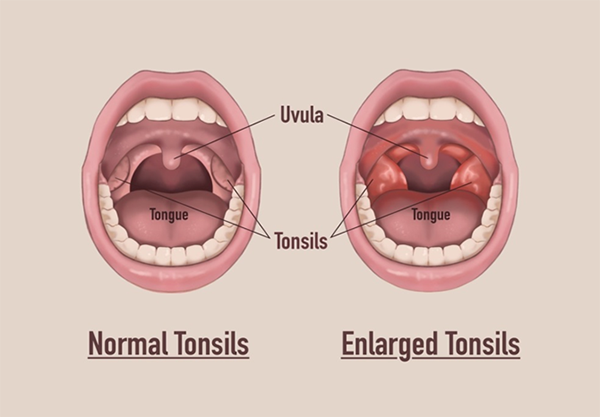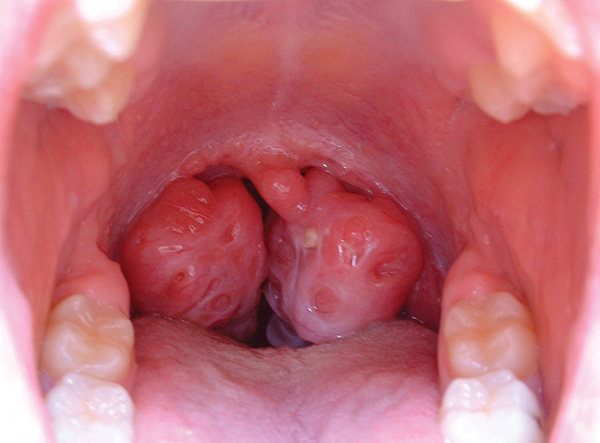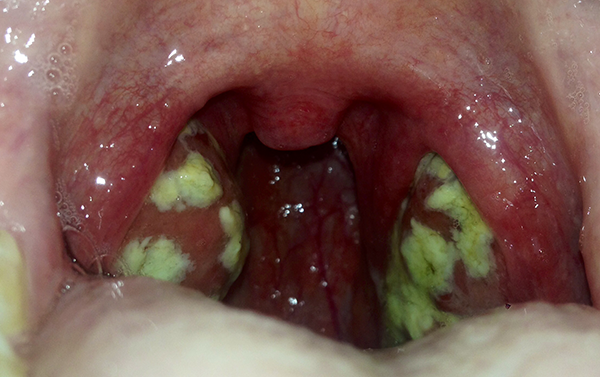Tonsillectomy & Adenotonsillectomy
Tonsillectomy & Adenotonsillectomy
Find out what tonsils and adenoids are and why children sometimes need to have them removed.
Key points about tonsillectomies and adenotonsillectomies
- your child may need one of these operations if they have snoring, obstructed breathing or, pauses between breathing at night
- they may also need an operation if they have frequent, severe or long-lasting tonsillitis
What are tonsils and what do they do?
Tonsils are fleshy pads on either side of the throat. They are made of lymph tissue which helps fight infections. Tonsils get bigger in young children and shrink to adult size by the age of 8 to 12 years.

What are adenoids and what do they do?
Adenoids are also made of lymph tissue which helps fight infections. Adenoids sit where the back of the nose meets the throat. You can't see them through the mouth without the use of special instruments.
Adenoids get bigger in young children and shrink to adult size by the age of 8 to 12 years.

Are tonsils and adenoids needed?
Although tonsils and adenoids are part of the infection-fighting (immune) system, they are not essential and their removal will not cause harm to the infection-fighting system. Other parts of the infection-fighting system in the upper throat continue to function.
What is a tonsillectomy?
A tonsillectomy is an operation to remove the tonsils.
What is an adenotonsillectomy?
An adenotonsillectomy is an operation to remove both the adenoids and tonsils.
When might my child need a tonsillectomy or an adenotonsillectomy?
Your doctor will consider several factors when talking with you about whether an operation is necessary. It may be helpful to remove your child's tonsils if they have any of the following.
Snoring caused by enlarged tonsils or adenoids
It's not normal for children to snore. Snoring can have long-term effects on sleep quality, behaviour and learning.
Snoring, restlessness during sleep or pauses in breathing (apnoeas) are reasons to consider surgery.
This photo shows big tonsils in a child with obstructive sleep apnoea

Read about snoring or noisy breathing
Frequent and severe tonsillitis
Your doctor may recommend an operation if your child is getting tonsillitis frequently and it's affecting their schooling. As a general guideline:
- 6 or more infections in 1 year (and each infection is severe enough to affect normal life such as needing time off school) or
- 4 to 5 each year in the last 2 years or
- 3 each year in the last 3 years
This photo shows what tonsillitis can look like. The tonsils have yellow, cheesy material on them.

Long-lasting tonsillitis
Your doctor may recommend this operation when there is so much damage to your child's tonsils that they remain infected and do not respond well to antibiotic treatment. They may have a sore throat much of the time, often with bad breath and sometimes yellow, cheesy, bad-smelling and bad tasting material in the small cracks in the tonsils.
How successful is a tonsillectomy or an adenotonsillectomy?
For sleep-disordered breathing
Removal of the tonsils and/or adenoids from the back of the throat opens the airway and creates more room. Your child will be able to breathe more normally at night after surgery and should sleep better.
Studies show that an adenotonsillectomy will cure or improve symptoms of sleep-disordered breathing in 80 to 97 in 100 cases. The operation is more successful if there are no other conditions that may be contributing to sleep-disordered breathing (such as obesity). On rare occasions, the adenoids may grow again.
For repeated acute tonsillitis
After removal of the tonsils, tonsillitis should never happen again. Throat infections due to colds and the flu will still happen (see sore throat).
Who will do the tonsillectomy or adenotonsillectomy?
Your family doctor may suggest your child sees a specialist ENT or ORL surgeon. After talking to you and examining your child, they may recommend removing your child's tonsils and/or adenoids.
What can I expect before, during and after a tonsillectomy or adenotonsillectomy?
This page last reviewed 14 March 2022.
Do you have any feedback for KidsHealth?
If you have any feedback about the KidsHealth website, or have a suggestion for new content, please get in touch with us.
Email us now